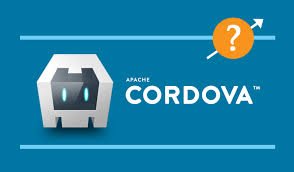
In today’s digital age, mobile applications have become an integral part of our daily lives. From social networking to e-commerce, there’s an app for almost everything. However, developing these apps for multiple platforms can be a daunting task, requiring separate codebases for each operating system. This is where Apache Cordova comes to the rescue, offering a seamless solution for building cross-platform mobile applications.
What is Apache Cordova?
Apache Cordova, formerly known as PhoneGap, is an open-source mobile development framework that allows developers to build mobile applications using web technologies such as HTML, CSS, and JavaScript. Developed by Adobe Systems, Cordova provides a platform-agnostic way of developing apps, enabling developers to target multiple mobile platforms with a single codebase.
How Does Cordova Work?
At its core, Cordova acts as a bridge between web technologies and native device features. When you build an app using Cordova, your code is wrapped in a native container that provides access to device APIs. This allows you to leverage the device’s hardware features, such as the camera, accelerometer, and geolocation, using familiar web development tools.
Advantages of Using Cordova
- Cross-Platform Compatibility: One of the primary advantages of Cordova is its ability to build apps for multiple platforms, including iOS, Android, and Windows Phone, using a single codebase. This significantly reduces development time and effort, as developers can write code once and deploy it across different platforms.
- Web Technologies: Cordova allows developers to use standard web technologies such as HTML, CSS, and JavaScript, which are widely used and well-understood by developers. This lowers the barrier to entry for new developers and enables faster development cycles.
- Access to Native APIs: Cordova provides access to a wide range of native device APIs through plugins, allowing developers to access device features such as the camera, contacts, file system, and more. This enables developers to create rich, interactive experiences that leverage the full capabilities of the device.
- Community and Ecosystem: Cordova has a vibrant community of developers and contributors who actively maintain plugins, provide support, and contribute to the framework’s development. This large ecosystem of plugins and tools makes it easy to extend Cordova’s functionality and integrate with third-party services.
- Open-Source and Free: Cordova is open-source and free to use, making it an attractive option for both individual developers and large enterprises. There are no licensing fees or restrictions, allowing developers to build and distribute their apps without any additional cost.
Getting Started with Cordova
Getting started with Cordova is relatively straightforward, thanks to comprehensive documentation and a wealth of resources available online. Here’s a basic overview of the steps involved in building a Cordova app:
- Installation: First, you’ll need to install Cordova and any necessary dependencies on your development machine. Cordova provides a command-line interface (CLI) that makes it easy to create, build, and manage projects.
- Creating a Project: Once Cordova is installed, you can use the CLI to create a new project by specifying the project’s name, package name, and platform(s) you want to target (e.g., iOS, Android).
- Adding Plugins: Cordova uses plugins to provide access to native device features. You can use the CLI to add plugins to your project, which will automatically install the necessary code and configuration files.
- Writing Code: With your project set up, you can start writing code using standard web technologies such as HTML, CSS, and JavaScript. Cordova provides a set of APIs for interacting with device features, which you can use to create your app’s functionality.
- Testing and Debugging: Cordova provides tools for testing and debugging your app on both emulators and physical devices. You can use the CLI to run your app locally during development and deploy it to a device for testing.
- Building and Publishing: Once your app is ready, you can use the Cordova CLI to build a distributable package for each platform you’re targeting. These packages can then be submitted to the respective app stores for distribution to users.
Conclusion
Apache Cordova offers a powerful and flexible solution for building cross-platform mobile applications using familiar web technologies. With its extensive set of features, vibrant community, and ease of use, Cordova has become the framework of choice for developers looking to reach a wide audience with their mobile apps. Whether you’re a seasoned developer or just getting started, Cordova provides the tools and resources you need to bring your ideas to life and create compelling mobile experiences for users across the globe.
